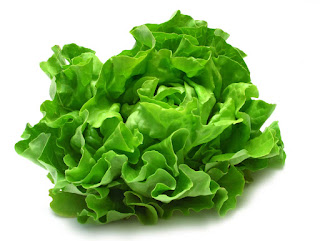3 Health and Nutrition Benefits of Red Leaf Lettuce
1. High in nutrients but low in calories
Red leaf lettuce is nutrient-dense, meaning that it’s high in a variety of essential vitamins and minerals, yet very low in calories.
Three cups (85 grams) of shredded leaves provide the following nutrients:
- Calories: 11
- Protein: 1 gram
- Fat: 0.2 grams
- Fiber: 1 gram
- Vitamin K: 149% of the Daily Value (DV)
- Vitamin A: 127% of the DV
- Magnesium: 3% of the DV
- Manganese: 9% of the DV
- Folate: 8% of the DV
- Iron: 6% of the DV
- Vitamin C: 5% of the DV
- Potassium: 5% of the DV
- Vitamin B6: 4% of the DV
- Thiamine: 4% of the DV
- Riboflavin: 4% of the DV
Its nutrition profile is similar to other popular leafy vegetables, such as green leaf, romaine, and iceberg lettuce, although there are a few notable differences.
For example, when compared to romaine, red leaf lettuce provides more vitamin K, slightly more iron, and slightly fewer calories — while romaine offers more fiber and vitamins A and C.
2. Very hydrating
Maintaining adequate hydration is important for your overall health.
While drinking water plays a significant role in keeping your body hydrated, eating water-rich foods, such as red leaf lettuce, can also help.
Red leaf lettuce is 96% water, making it incredibly thirst-quenching.
Its high water content may also help curb hunger and promote fullness.
3. Loaded with powerful antioxidants
Red leaf lettuce boasts a number of antioxidants, which protect your body from damage caused by unstable molecules called free radicals. Having too many free radicals in your body may increase your likelihood of certain diseases.
Red leaf lettuce is especially rich in the antioxidant beta carotene, which is a carotenoid pigment that your body converts into vitamin A (8, 9).
Eating adequate amounts of beta carotene may bolster your eyesight and reduce your risk of macular degeneration, a condition that can lead to vision loss.
What’s more, red leaf lettuce gets its reddish-purple hues from anthocyanins, a group of flavonoid antioxidants.
Diets rich in anthocyanin-dense foods may fight inflammation and are linked to improvements in heart disease risk factors, such as HDL (good) and LDL (bad) cholesterol.
Additionally, red leaf lettuce is a good source of vitamin C, another powerful antioxidant. Foods high in this vitamin may reduce your risk of heart disease and certain cancers.
CREDITS: https://www.healthline.com/nutrition/red-leaf-lettuce





Comments
Post a Comment